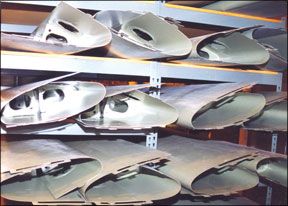For those of us to whom a half-million bucks for a new airplane is a non-starter, older airframes-maybe 40-year-old airframes-are the only option. And even those can cost the better part of $100,000. For that kind of money, a would-be buyer assumes these expensive purchases will be supportable with parts, accessories and upgrades for the foreseeable future. And for the most part, a telephone call and a credit card payment are all thats needed to get a specific part to your mechanic in a matter of days, if not hours. But that isn’t always true and it may become less true as our airplanes get older. And even when a part is available, in some cases you may find that the hit to the credit card is breathtaking, if not prohibitive. Last year our three-member ownership group discovered some of the limitations of the parts supply system for our 1977 Cardinal RG. We had a door blow open in the wind, something thats not unusual for a Cardinal, unfortunately. There was quite a bit of damage to the door hinge and the door itself. Our mechanic was able to get all the parts quickly, including the door skin, which surprised him because Cessna doesnt stock door skins for Cardinals. Instead, it retains the tooling and produces them as needed, a common practice for parts that arent commonly requested and not a bad procedure when it works. One little problem: The door skin didnt fit the curve of the door. A call to Cessna got an assurance that they would make another one, but when they tried, they discovered that the tooling for making the door skin was broken. Cessna now had to figure out how to fix a tool that was designed more than 30 years ago. To make a long story short, it took almost four months and a call to the president of Cessna to get a properly crafted door skin. To Cessnas credit, once we complained loudly enough, they asked our mechanic to send the entire door to them. They then made the skin, attached it to the door and shipped it back, only charging us for the original door skin. But this got us to wondering how prevalent a problem this is in the industry, and how the various manufacturers are handling it.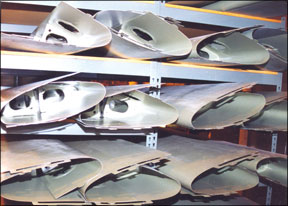
Factory View
Its doubtful that any of the legacy manufacturers envisioned supporting fleets of 40- and 50-year-old airplanes back when they were designing what many of us fly today. They followed the automotive model, which envisions replacing the entire vehicle within some finite time. The factories have responded with varying

225
enthusiasm to the challenge of balancing the high cost of inventory against the high cost of unhappy customers.
Of those we interviewed, only two stood out: Cessna, for the most organized and enthusiastic support structure in the industry and Cirrus, for putting the most thought into the problem up front. Perhaps its no coincidence that both of these companies are vying for the title of sales leader.
Among the others, Mooney seems to be trying hardest, but simply doesnt have the resources that Cessna has and admits it isn’t realistic to stock or even have parts available for its oldest aircraf. (The cutoff date is late 1960s models.) But Mooney says it makes “reasonable accommodations” for owners stuck for parts.
The American Bonanza Society told us that Beech isn’t bad at supplying parts, but the cost has become prohibitive on some. A tach cable that used to be $65, for example, is now $500. And from our discussions with Piper owner groups and other sources, we came away with the impression that youre more likely to come up empty with a parts request to Piper than for the other legacy manufacturers.
New Pipers Mark Miller explained that Piper handles parts requests on a case-by-case basis. If a part is in demand, they will make it if they have the tooling. He said they have tooling going back to the PA-23 series (Apache/Aztec), but there are instances where the tooling for certain parts is simply not available, or the cost of resurrecting the tooling is prohibitive. In those cases, Piper just says they don’t have it, in which case they point customers to two suppliers that carry a lot of Piper parts: SouthEast Piper in Tallahassee, Florida and Columbia Air Services in Groton, Connecticut.
MARKETING
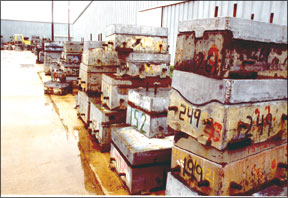
At Cessna, parts support for an aging fleet is as much a marketing issue as a customer-support issue. With Cirrus threatening to eat Cessnas lunch, Cessna can tout a well-oiled parts system for its older models and ask new airplane buyers,”Will those other guys be here for you 30, 40 or 50 years from now?” Expect to hear a lot of this when Cessna introduces its Next Generation piston aircraft.
Its a valid question. And the other guys-Cirrus-have an interesting answer (see below). But everyone acknowledges that Cessnas system, even though it has glitches like our door, is a model of organizational planning. (See the sidebar on page 21.)
One strategy that Cessna (and other manufacturers) use to control their inventory is to offer owners larger assemblies containing the desired part. For example, if an owner requests a gasket for a fuel indicator, he may discover that they no longer stock the gasket, but they do stock the entire fuel indicator. The downside is that you may have to pay a few hundred bucks to replace a 59-cent gasket. The upside is that you get your airplane back in the air. But even with all of Cessnas organization, some part searches come to a dead end and they have to admit they just don’t have the part and cant make it for you, even for an exorbitant price. At that point Cessna, like the other manufacturers, will refer you to the surplus parts suppliers or the salvage yards.
With its oldest aircraft only about seven years old, Cirrus is not a legacy OEM. But they are headed towards being one and they are smart enough to be thinking like one. Of course, they have one big advantage over the legacy OEMs: They can learn from their competitors experiences.
According to Tom Bartoe, executive vice president of operations and Cirrus supply chain guru, the company started thinking about parts support during the design
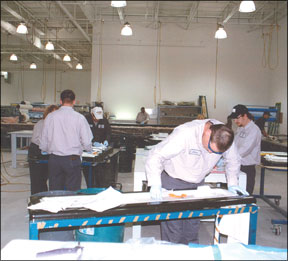
phase of their aircraft development. For any part proposed for the aircraft, their focus right from the beginning, was “Who owns the design, who owns the tooling and how can we maintain sufficient control of both so parts support doesnt kill us?” Because of this planning, they believe theyre in a better position to support their aircraft as they age. Cirrus strategy is to retain its vendors, reasoning that if it uses the same vendor for the current model that they used for previous models, they have more leverage to get that vendor to support parts for previous models.
They consider a stable vendor base important to parts support in the long term and understanding a subcontractors business is part of that effort. For rarely-requested parts designed by Cirrus, the company considers giving the tooling to a subcontractor in return for an agreement to provide those parts as needed. This is markedly different from Cessna, which says it rarely gives out engineering drawings or tooling.
Cirrus has already had cause to test this system. The early SR20s had vacuum systems, while current aircraft are all-electric. SR20 vacuum systems are therefore already being supported by Cirrus post-production parts support system. It will be interesting to see how this plan works out as Cirrus matures into a legacy OEM.
Getting Parts
So your airplane is in the shop and your mechanic calls to say you need a part.
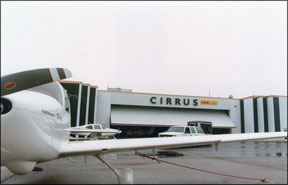
Hes not sure its in stock but he will check. Whats your strategy? The first source of parts is the manufacturer or OEM. This is where your mechanic goes first because its the least hassle for him-the parts are always certified, he deals with familiar people (he probably has an active account with them) and he knows they will ship things promptly. (Usually.)
If the OEM says the part is no longer in stock, don’t give up. Some manufacturers have set thresholds for when they remove a part from their in-stock list and they may still have some in inventory. Cessna, for example, says that they are supposed to scrap parts when they write off inventory but they don’t. Instead, the parts go into “the morgue.” You need to find someone in the parts department who will dig deeper than the online inventory listings.
Resist the impulse to ask your mechanic to make this call. The OEM parts department hears from hundreds of mechanics a day. And your mechanic has a relationship with the parts department he wants to preserve. Instead, call them yourself. Introduce yourself as the end customer and be polite but persistent.
If the answer is that it really isn’t in stock, they may still have the tooling. Ask if they can custom-make the part for you. Make sure you ask about price and projected delivery date-custom-made parts can cost many times the price of a mass-produced part and can take weeks or even months to produce.
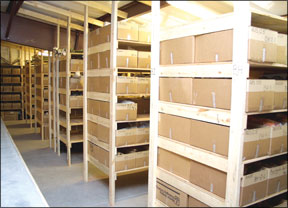
Once you determine that the OEM really cant help you, either because they cant supply the part or the price of a custom-made part is too high, you have to look elsewhere. Heres our list of recommended alternate sources:
Type Clubs
-This organization (American Bonanza Society, Cessna Pilots Association, Mooney Aircraft Pilots Association, Cherokee Pilots Association, Cirrus Owners and Pilots and so on) is often one of the best sources of parts help. They can point you to the best sources theyve found. Also, ask about repair sources. Sometimes a part your mechanic thinks should be replaced can be repaired, in which case it comes back certified.PMA Houses
-Do your own online search for “(aircraft model) PMA.” PMA (parts manufacturer approval) and you will often see it listed as FAA-PMA because the approval comes from the FAA. PMA parts are yellow-tagged with an FAA Form 8130-3 that certifies that the part meets FAA requirements, which means your mechanic can install it without worrying about liability.Unfortunately, the PMA route doesnt have a great record for unusual parts. Most PMA parts are commonly replaced items like starters, throttle cables and such. The PMA house has to certify each part, so unless they have some assurance that theyll sell enough to make back the certification cost, they wont produce the part. But there are PMA houses that specialize in certain models and they sometimes support some of the less-requested parts. If you can find one of these, they just might stock your part.
Surplus Suppliers
-This includes outfits like Preferred Airparts (www.preferredairparts.com) and Select Airparts (www.selectairparts.com). These companies buy surplus inventory from dealers and other sources. They have their own inspection and quality-control systems, but the parts are usually not sold as certified. This is a quote from Select Airparts Website:“While Select Airparts maintains an internal quality control system, this is not an FAA-approved process. All parts advertised in this website are offered “as-is.” Determination of airworthiness and applicability to type-certificated products is the responsibility of the purchaser and/or installer. No statement in this website implies, or is intended to imply, that parts sold by Select Airparts are airworthy or are approved for type-certificated products.”
Your mechanic will have to determine if the parts you buy are airworthy. don’t be surprised if your mechanic tells you he wants to hire a Designated Engineering
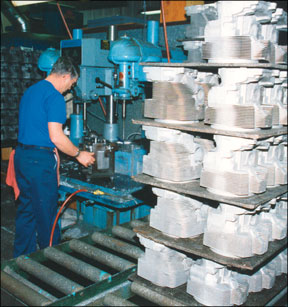
Representative (DER) to certify the parts airworthiness. Depending on the part, this could entail hundreds or even thousands of dollars. (When we were repairing our door, our mechanic considered hiring a DER; his estimate of the cost was $2000.)
Salvage Operations
-“Salvage operation” is a nice term for junk yard. They sell parts from wrecked or retired aircraft. Again, your mechanic is the final judge of airworthiness and again, he may want to hire a DER. A couple of salvage operations are Wentworth Aircraft (www.wentworthaircraft.com) and Dawson Aircraft (www.aircraftpartsandsalvage.com). we’ll look at these in detail in a future issue.Parts Locator
-This can be an online service or a person. One online service is Airparts.com (www.airparts.com/assist_parts.shtml). You can submit a parts request and they will e-mail it to their subscribing parts suppliers.An interesting source of parts-locating assistance, at least for Cessna and Piper owners, is the Cessna Flyer Association (www.cessnaflyer.org) and the Piper Flyer Association (www.piperflyer.org). Both are run by the same group and one of the founders, Trevor Janz, spends much of his day locating parts for members. He has years of experience and seems to have contacts throughout the world. We would be tempted to save Janz for situations where other sources have failed, but hes definitely a resource worth considering.
Make It Yourself
-Yes, you can. And yes, its legal. However, the subject of owner-produced parts is we’ll beyond the scope of this article. One of the best treatments of it is available to Cessna Pilots Association members as Tech Note 051, written by Mike Busch, or do a search for FAA Advisory Circular 20-62D. But note that your A&P has to be willing to sign off on the part, so you might still end up paying for a DER.As the average age of the fleet increases, owners will have to get more resourceful about locating parts. Its no longer possible to simply tell your mechanic to order the part. You may now have to get intimately involved in the process of finding and purchasing parts for your airplane. And the older the airplane is, the more difficult that might be.
In buying an older airplane, you should definitely consider how supportable it will be, parts wise. Cessna is clearly the industry leader, probably followed by Beechcraft sources. Older Pipers may be the most difficult to keep flying, but this will vary with models. Owner groups are a good place to start asking about parts availability, but ask your local shop, too. The guys with the wrenches are the ones who have to fix the airplane, regardless of where the parts come from. If supporting an old Cherokee is like pulling teeth, do you really want to own one?
Jonathan Spencer is a freelance writer and aircraft owner based near Boston.

